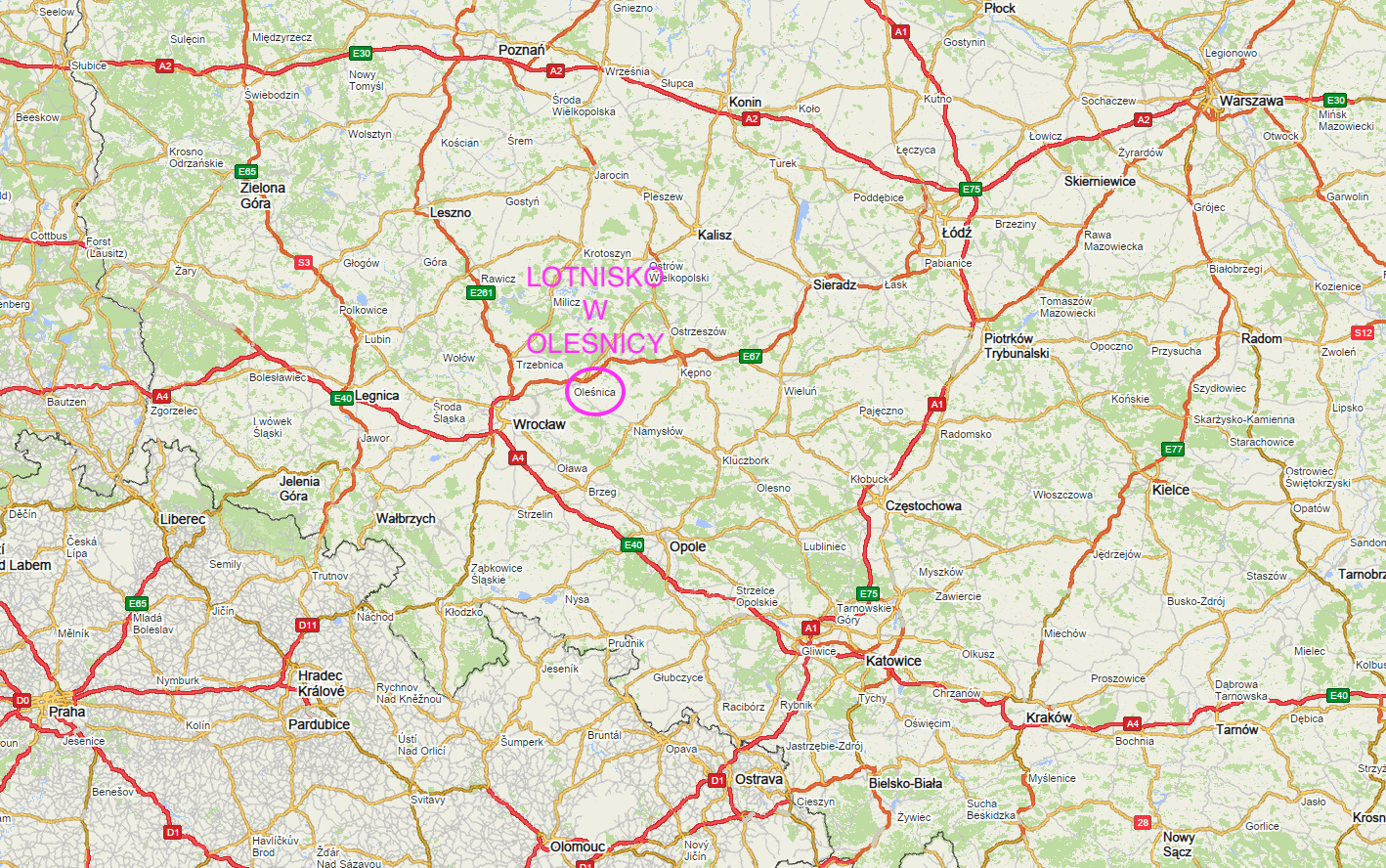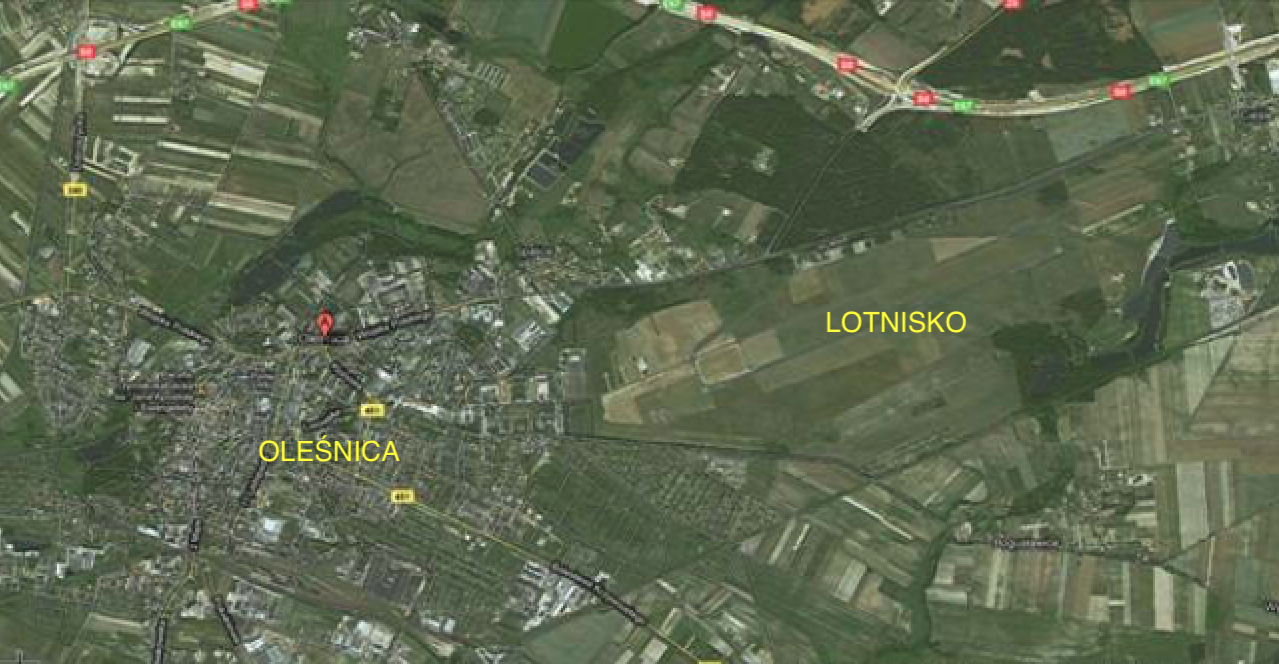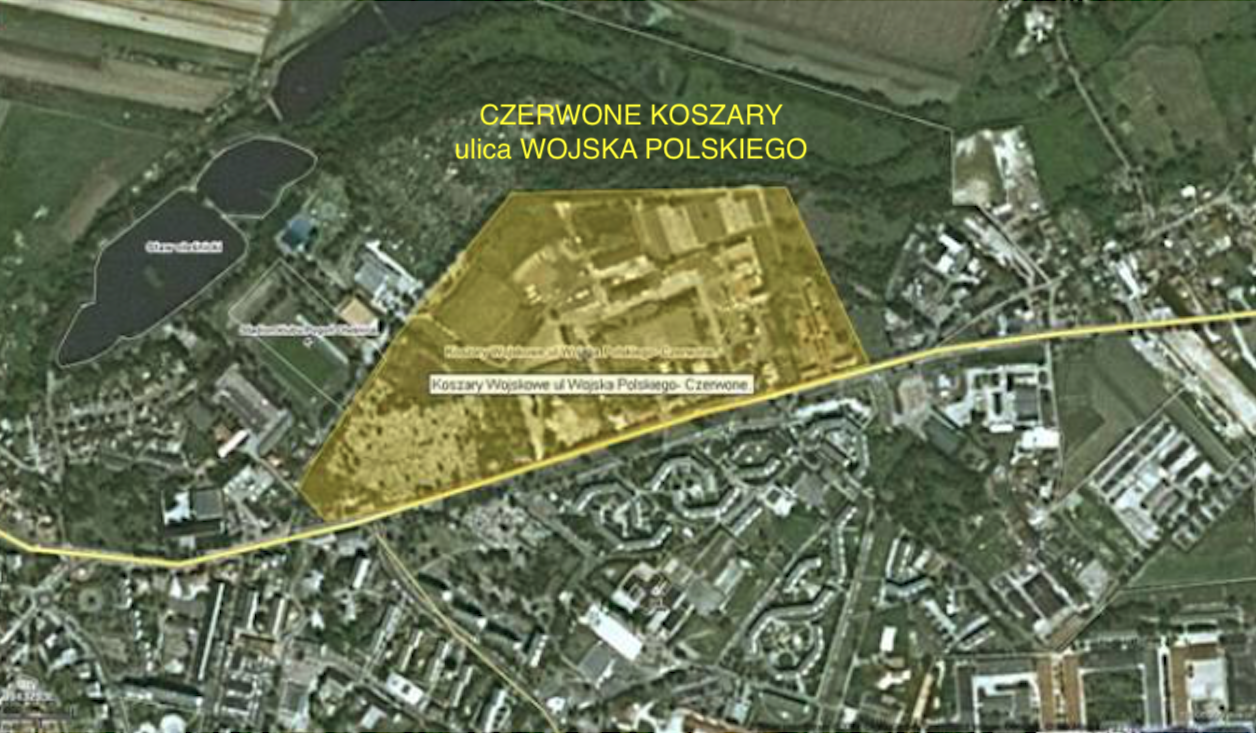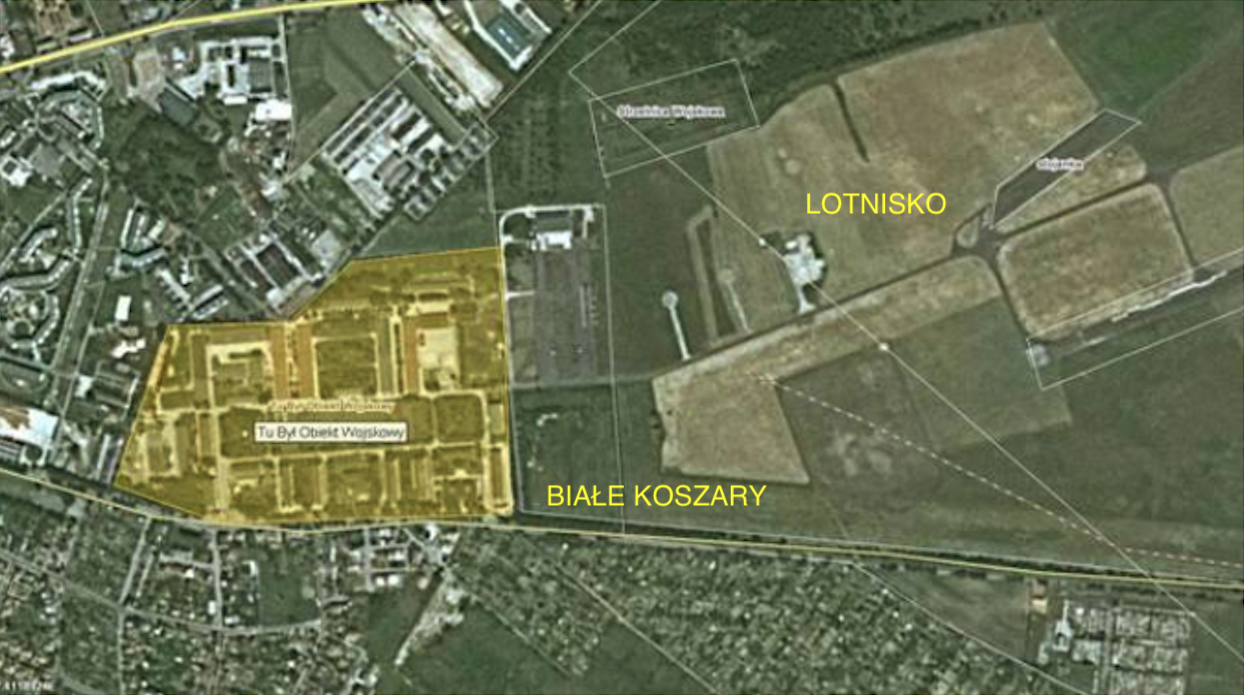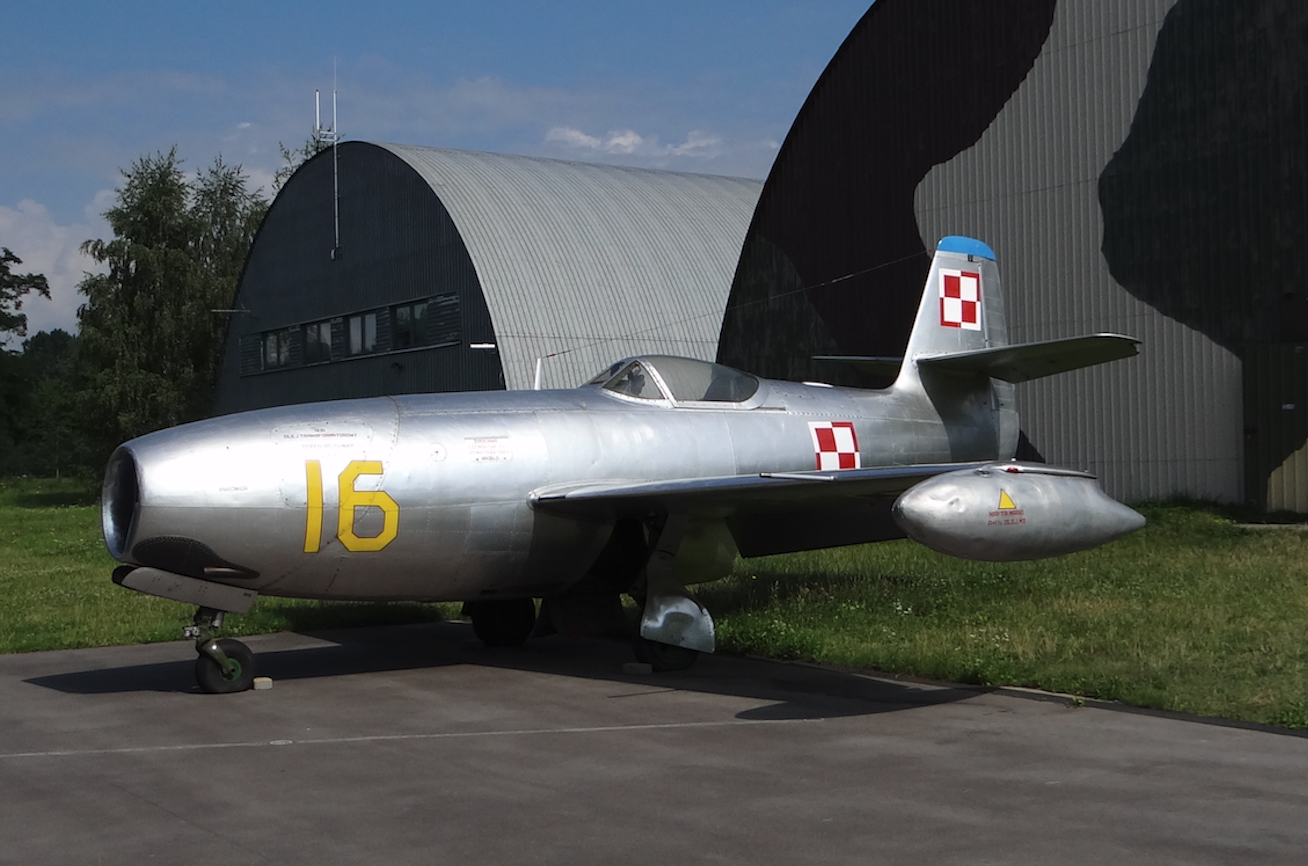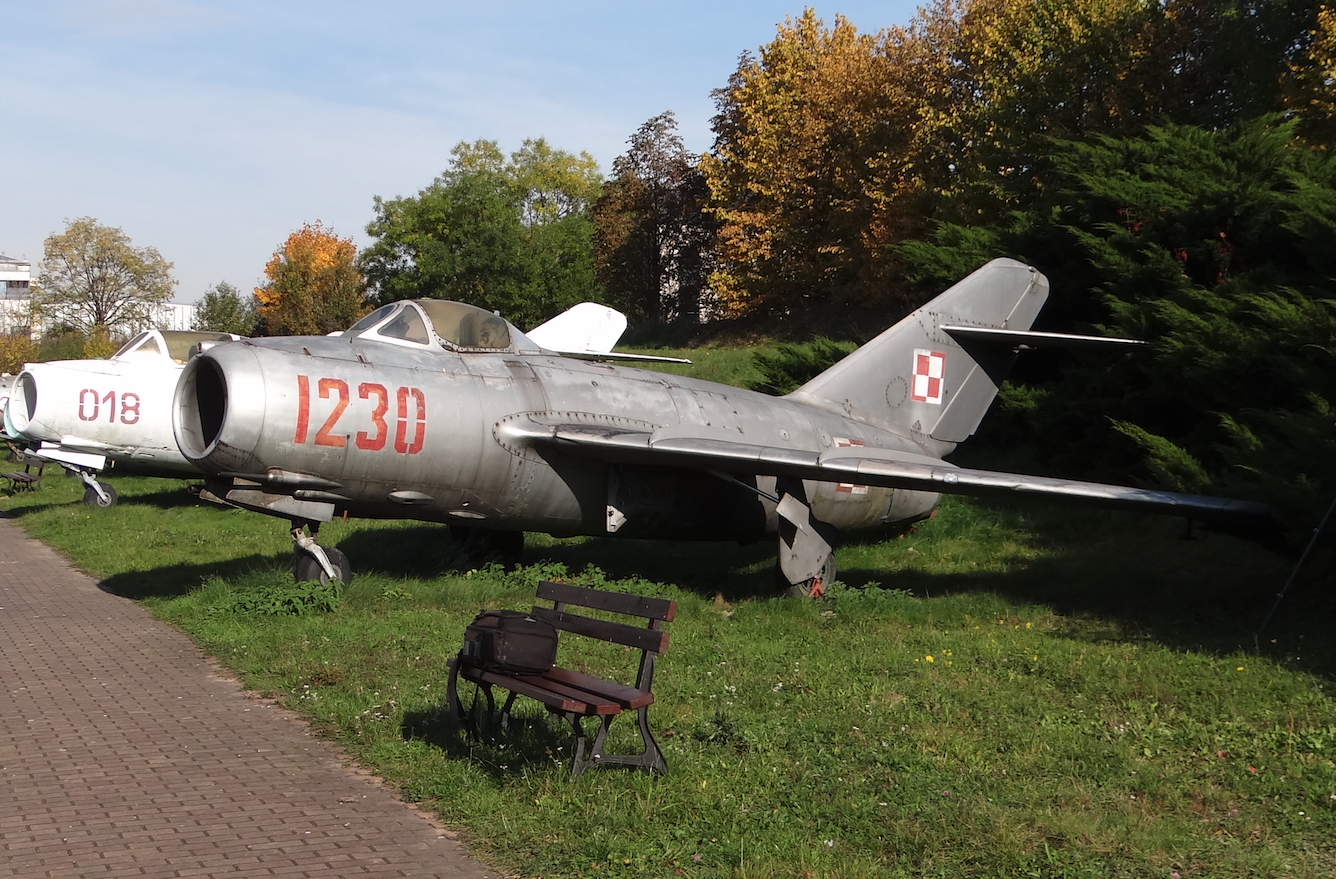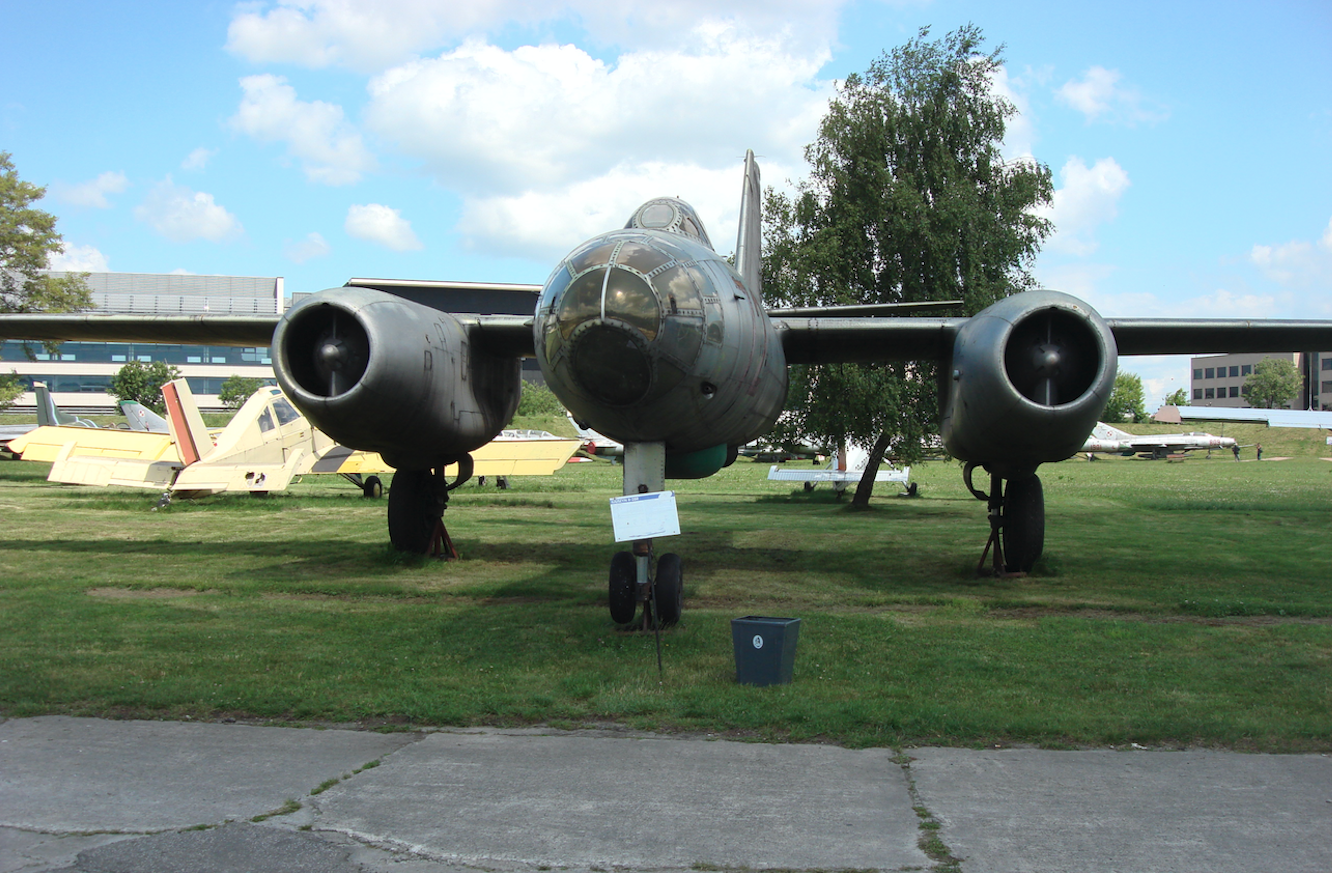Oleśnica 2011-07-23
Lotnisko Oleśnica.
Z lotniska korzystała Techniczna ( Oficerska ) Szkoła Lotnicza w okresie 1951 – 2002.
Historia Miasta Oleśnica.
Oleśnica bez wątpienia była grodem Piastowskim. Od 1294 roku, miejscowość należała do Księstwa Głogowskiego. Osada prawa miejskie uzyskała w dniu 22.02.1255 roku, a nadał je książę wrocławski Henryk II Biały. Lokację nadano na prawie średzkim. Już w XIII wieku, była tu mennica. Na wszystkich mapach pochodzących z XIV wieku Oleśnica jest już zaznaczona. Od 1320 roku, Oleśnica była stolicą księstwa i miastem rezydencjalnym księcia Konrada I, tytułującego się spadkobiercą Korony Polskiej. Po śmierci Konrada Białego Młodszego, ostatniego władcy z miejscowej linii Piastów w 1492 roku, Oleśnica wraz z księstwem została przekazana ziębickiej linii czeskich Podiebradów. Od 1647 roku, Miasto przeszło pod władanie książąt wirtemberskich. Oleśnica zawsze miała silne kontakty z Krakowem. Miasto korzystało także ze swego położenia, boleżało na szlaku z Wrocławie do Wielkopolski i na Mazowsze. Uruchomiono tu jedną z pierwszych drukarni na ziemiach piastowskich. Założono tu także jedno z bardziej znanych gimnazjów. Między Oleśnicą, a Wrocławiem przebiegałaniewidoczna granica między językiem Polskim, a niemieckim. Oleśnica była zdecydowanie Miastem Polskojęzycznym.
Charakter Oleśnicy uległ zmianie w 1850 roku, kiedy ulokowano w nim garnizon wojskowy.
W 1868 roku, przez Oleśnicę poprowadzono linie kolejową łączącą Wrocław z Górnym Śląskiem. W tym okresie powstała tutajgazownia, wodociągi, szpital oraz zakłady naprawcze taboru kolejowego.
Wielka wojna światowa oszczędziła Miasto Oleśnica. Podobnie było w czasie niemal całej drugiej wojny światowej. Lecz tylko do przełomu styczeń/luty 1945 roku, kiedy Oleśnicę zajęli rosjanie. Do końca kwietnia 1945 roku, Miasto zostało zniszczone przez wojska rosyjskie w 80 procentach. I to nie w wyniku zwykłych działań wojennych, lecz przez grabieże, bezmyślne niszczenie i wzniecanie pożarów przez rosyjskiego okupanta.
W wyniku nowego podziału Europy dokonanego przez wielkich tego świata Oleśnica wróciła w granice Polski. Szybko została zasiedlona przez Polaków, zwłaszcza z uwagi na to, iż większość rdzennych mieszkańców mówiła po w Oleśnicy po Polsku i czuła się Polakami. Lecz odbudowa miasta trwała długo.
W 2008 roku, Oleśnica liczyła 37 414 mieszkańców i miała powierzchnię 20,96 km kwadratowego. Co dotyczy szkolnictwa, to o ile na poziomie podstawowym, gimnazjalnym i średnim, Oleśnica ma wysoki poziom nauczania, to nie udało się stworzyć żadnej szkoły wyższej. Nie licząc szkoły oficerskiej. Większość młodzieży kształci się dalej we Wrocławiu. Niestety obecnie ( 2011 rok ) w Oleśnicy jest duże bezrobocie.
Piastowski Zamek w Oleśnicy z XIII wieku, nadal cieszy oczy turystów. Dumnie stoi nadal Bazylika Świętego Jana Apostoła z XIII wieku. W Oleśnicy istnieje około 18 światowej sławy zabytków architektonicznych. Wśród nich; 4 świątynie, ratusz, brama Wrocławska, mury średniowieczne, wieża ciśnień i wiele innych. Większość z nich po drugiej wojnie światowej odbudowano i są systematycznie konserwowane.
Oleśnica ma dogodne połączenia drogowe. Dwie Drogi Krajowe Nr 8 i Nr 25, Drogi Wojewódzkie Nr 340 i Nr 451. Miasto Oleśnica posiada duży dworzec autobusowy i dogodne połączenia z dużymi miastami w Polsce. Najwięcej kursów odbywa się na trasie do Wrocławia. Oleśnica ma także obwodnicę, dzięki której ciężki transport nie przejeżdża przez Miasto.
Oleśnica to duży węzeł kolejowy. Są tu dwie stacje kolejowe; Oleśnica i Oleśnica Rataje. Łączą tu się linie z; Wrocławia, Katowic, Lublińca, Kluczborka i Ostrowa Wielkopolskiego. Jeszcze kilka lat temu, możnabyło pojechać międzynarodowymi pociągami do Drezna lub do Czech.
Koszary w Oleśnicy.
W 1850 roku, Oleśnica stała się Miastem Garnizonowym. W Oleśnicy były ( przyjmując ogólnie ) dwa kompleksy koszarowe. Jeden zwany Czerwone Koszary, był między innymi użytkowany w okresie 1972 – 1989, przez 1. Szkolny Pułk Samochodowy.
Drugi kompleks zwany Białymi Koszarami bardziej nas interesuje. To tu mieściła się TOSWL – Techniczna Oficerska Szkoła Wojsk Lotniczych. Białe Koszary zbudowano z końcem XIX wieku. Były kilkakrotnie rozbudowywane ( przebudowywane ). Polskie Wojsko zadomowiło się w Białych Koszarach dopiero w 1950 roku. Założono w nich 11. i 12. Szkołę MłodszychSpecjalistów Lotniczych. W 1955 roku, umieszczono tu Techniczną Oficerską Szkołę Wojsk Lotniczych.
Historia Lotniska w Oleśnicy.
W Internecie można znaleźć informacje, iż obok Białych Koszar w okresie 1937 – 1938, rozpoczęto budowę lotniska. Jest to informacja napisana na wyrost. Fakty są inne. W Białych Koszarach stacjonowali dragoni. Dlatego obok były duże wolne przestrzenie. Był to plac ćwiczeń. Na tych hipodromach trenowali jeźdźcy. Ćwiczono galop, kłus, stęp, pojedynczychjeźdźców jak i pododdziały. Naturalnie był to dogodny teren na pole wzlotów samolotów. Tak było przecież na przykład na krakowskich Rakowicach. W 1937 roku, Hitler już zbroił wojsko na potęgę. Planując lokalizację nowych lotnisk, Oleśnica byławręcz idealnym kandydatem. Blisko ewentualnego frontu. Do przyszłego lotniska był dogodny dojazd drogowy i kolejowy. Z początkiem 1938 roku, bazowało tu około 40 samolotów bojowych.
W 1938 roku, rozpoczęto organizowanie warsztatów remontowych dla samolotów. Było to konieczne, gdyż ówczesna technika, choć stosunkowo prosta, wymagała częstych napraw. Zakłady te nosiły numer 117 i były filią zakładów we Wrocławiu.
Na południe od obiektów lotniskowych niemcy zorganizowany obóz pracy przymusowej. Więźniowie tego obozu byli wykorzystywani do budowy obiektów lotniskowych. Większość budowli powstała w trakcie trwania drugiej wojny światowej. Zbudowano trzy hangary, obiekty warsztatowe, stanowisko kierowania lotami, skład materiałów pędnych, liczne magazyny i wiele innych obiektów. Większość z nich była konstrukcjami drewnianymi. Hangary były stalowymi konstrukcjami.
Według dostępnych informacji niemcy zorganizowali nie jedno, lecz cztery lotniska. Oprócz opisywanego powstało drugie zlokalizowane na wschód po drugiej stronie szosy wiodącej do Sycowa. Tutaj miały operować samoloty bombowe i transportowe. Lotnisko szybowców desantowych w okolicach miejscowości Sokołowic. Oraz czwarte lotnisko – atrapa, czyli lotnisko pozorowane.
Około 1.02.1945 roku, Lotnisko Oleśnica zostało zajęte przez armię rosyjską. Było to pierwsze lotnisko zajęte przez wojsko rosyjskie na terenie Niemiec. Stacjonowały tu samoloty myśliwskie Jak-3 z 1. gwardyjskiego pułku lotniczego oraz Jak-9 z 89. gwardyjskiego pułku lotniczego. Obie jednostki należały do 7. gwardyjskiej dywizji myśliwskiej. Pułki przybyły z lotnisk w Częstochowie i Szczekocinach (na wschód od Częstochowy). W lutym 1945 roku, na Lotnisku Oleśnica stacjonowało około 80samolotów myśliwskich i 10 innych maszyn. W dniu 5.02.1945 roku, 1. pułk rosyjski został przebazowany na lotnisko w Żaganiu. Ze wspomnień rosyjskich pilotów wiadomo, że około 7.02.1945 roku, przyszło ocieplenie i duże roztopy tak, iż musiano zawiesić loty, bo samoloty grzęzły. Jest to ewidentny dowód, że w tym okresie Lotnisko Oleśnica nie dysponowało twardą drogą startową. W dniu 11.02.1945 roku, samoloty myśliwskie opuściły grząskie Lotnisko w Oleśnicy.
Ponownie rosyjskie samoloty wylądowały w Oleśnicy w połowie marca 1945 roku, choć rozkaz do przebazowania wydano w dniu 11.03.1945 roku. Pole wzlotów już było suche. Tym razem stacjonowała tu 8. gwardyjska dywizja bombowa ze 160., 161. oraz 162. pułkiem lotnictwa bombowego. Dywizja dysponowała samolotami bombowymi nurkującymi Petliakow Pe-2. Dywizja w tym czasie zajmowała także Lotnisko Brzeg.
Od 15.03.1945 roku, bombowce Pe-2 z Lotniska Oleśnica brały intensywny udział w walkach na linii umocnień Odry. Rosyjski pochód na zachód został przyhamowany. Ataki prowadzono na wszystkich możliwych kierunkach. Od kierunku południowego do północno-zachodniego. Rosjanie działali chaotycznie i ze zmiennym szczęściem. Niejednokrotnie musieli zdobywać miejscowości już uprzednio zdobyte. Trzeba przyznać, że niemcy stawiali zacięty opór. Na dodatek system samozaopatrzenia poszczególnych rosyjskich jednostek nie sprzyjał pochodowi na zachód. Za jednostkami bojowymi nie szło zaopatrzenie ze wschodu, lecz tylko jednostki NKWD. Pułki rosyjskie w marcu 1945 roku, z Lotniska Oleśnica bombardowały kolejno; Wrocław, Żagań, Racibórz, Nysę, ponownie Wrocław, Opole, ponownie Wrocław. W kwietniu 1945 roku, ponownie atakowano Wrocław oraz Lotnisko w Świdnicy. Wielu zabitych rosyjskich lotników zostało pochowanych na cmentarzu odległym o 4 km na wschód od Oleśnicy.
Mizerne rezultaty zdobywania systemu umocnień linii Odry, a jednocześnie dobre postępy w walkach na "wale pomorskim", spowodowały, że priorytet otrzymała operacja zdobycia Berlina. Dlatego zapadły rozkazy o przebazowaniu 8. dywizji z Lotniska Oleśnica, na Lotnisko Szprotawa. Przebazowanie rozpoczęto w dniu 14.04.1945 roku, małymi grupami samolotów z jednoczesnym wykonywaniem zadań bojowych. W dniu 15.04.1945 roku, wieczorem na Lotnisku Oleśnica nie było jużrosyjskich maszyn.
Geneza Szkoły Lotniczej w Oleśnicy. 1950 rok. Zamość.
W 1950 roku, minęło już 6 lat od utworzenia nowego komunistycznego systemu szkolenia lotniczego w Wojsku Polskim. Już ( w 1945 roku ) nastąpiło rozdzielenie szkolenia personelu latającego od szkolenia mechaników i techników różnych specjalności lotniczych. Ci pierwsi szkolili się w Dęblinie, ci drudzy w Warszawie na Bemowie. Lecz w elemencie technicznym,postanowiono w 1950 roku, szkolić także specjalistów na wyższym poziomie i z bardziej rozległą wiedzą, czyli z wyższym wykształceniem. Naturalnym posunięciem było rozdzielenie szkoły na dwie niezależne szkoły; Oficerską i Techniczną. Tę pierwszą postanowiono zostawić w Warszawie, a drugą przenieść z powrotem do Zamościa.
W dniu 25.02.1950 roku, ukazał się Rozkaz ministra obrony narodowej, nakazujący przeniesienie Technicznej Szkoły Lotniczej do koszar w Zamościu. Czas do wykonania rozkazu to 31.07.1950 roku. Szkoła wróciła ponownie do Zamościa. Ostatni eszelon przybył do Zamościa w dniu 27.06.1950 roku. Konieczny był jednak remont, gdyż koszary przez cztery lata były opuszczone i zaniedbane. Remont ukończono w listopadzie 1950 roku. Ponieważ teraz szkoła nie dzieliła obiektów z inną szkołą, jak poprzednio. Warunki lokalowe były bardzo dobre. Nawet lepsze niż w Warszawie.
W 1950 roku, nowa technika w postaci samolotów myśliwskich z napędem turboodrzutowym, pojawiły się w Polskim Lotnictwie. Ponieważ samoloty z napędem turboodrzutowym wymagały nawet 9 różnych żołnierzy-specjalistów, koniecznym okazało się szkolenie młodszych specjalistów z wąską specjalizacją. Szkolono ich w szkołach młodszych specjalistów lotniczych. Szkoły te powstawały zwykle przy Dywizjach. Jedna z takich szkół powstała także przy TSWL wZamościu, a dwie inne w Oleśnicy.
Zgodnie z Rozkazem MON Nr 03/Org z dnia 28.01.1951 roku, szkoła przeszła na etat Nr 20/199. Zwiększeniu uległ zarówno etat stały jak i zmienny. Teraz w szkole szkoliło się 1 430 osób. Nastąpiła także kolejna zmiana nazwy szkoły na Techniczną Szkołę Wojsk Lotniczych. Ta nazwa utrzymała się najdłużej i symbolizuje szkołę w Zamościu.
W dniu 7.02.1951 roku, nastąpiła zmiana na stanowisku komendanta szkoły. Odszedł ppłk Michał Jakubik, a jego miejsce zajął płk inż. Paweł Worobiow.
Jednak już wiosną 1951 roku, szkoła przeszła na kolejny etat. Liczbę szkolących się zwiększono z 1 430 osób do 3 160 osób. Żołnierzy zorganizowano w kolejnych batalionach szkolnych. Łącznie 7 batalionów szkolnych, a we wrześniu 1951 roku,było już 8 batalionów. Jeden batalion to były trzy kompanie. Przy tak dużej liczbie żołnierzy koszary okazały się za małe.Ciasnota była bardzo duża i z dobrych warunków, stały się one trudne.
W kwietniu 1951 roku, szkołę opuściła pierwsza grupa specjalistów obsługi samolotów myśliwskich typu Jak-23. Łącznie około 40 osób. Jednocześnie szkolono grupę oficerów techników, którzy w liczbie 170 żołnierzy rozpoczęli naukę w maju 1951 roku.
W tym okresie, wystąpiły kolejne tendencje skracania okresu nauki. Efekt był taki, iż w tym samym okresie uczyli się żołnierze na mechaników na kursach; 18 miesięcy, 9 miesięcy, 8 miesięcy. A do tego z różną ilością godzin, bo niektórzy musieli uzupełniać wykształcenie podstawowe.
W 1952 roku, przyjęto do realizacji nowe programy szkolenia dla mechaników samolotów turboodrzutowych. Jedno szkolenie z programem skróconym, 12 miesięcy i 330 godzin. Drugie szkolenie normalne z czasem 24 miesięcy i 415 godzin. Rozpoczęto także szkolenie w nowych specjalnościach do obsługi; stacji akumulatorowych, elektro-rozruszników, dystrybutorów tlenowych i innych.
W dniu 1.08.1952 roku, Szkolę Młodszych Specjalistów z Zamościa przeniesiono do Warszawy na Bielany na ulicę Żeromskiego i podporządkowano 5. Dywizji Lotnictwa Myśliwskiego.
W tym czasie szkoła wyszkoliła także grupę specjalistów, którzy zostali przedstawicielami wojska w Polskim Przemyśle Lotniczym, który na masową skalę rozpoczął budowę samolotów typu Lim-1, a następnie Lim-2.
Z początkiem 1953 roku, wśród kadry szkoły przeprowadzono nabór do wyższych uczelni wojskowych. Nastąpiła także zmiana na stanowisku komendanta. Płk inż. Paweł Worobiow przekazał obowiązki ppłk Siergiejowi Aleksandrowowi, w dniu24.03.1953 roku.
W grudniu 1953 roku, rozpoczęto szkolenie pierwszej grupy mechaników samolotów bombowych typu Ił-28 z napędem turboodrzutowym.
Pierwsze wypadki w Polskim Lotnictwie Wojskowym eksploatującym samoloty z napędem turboodrzutowym wykazały niezbicie, że szybkie, niedbałe szkolenie leży u podstawy tych zdarzeń. Lecz komuniści nie mieli zamiaru przyznawać się dopopełnionych błędów. Byli tak zajęci utrwalaniem władzy i ostatecznym rozliczaniem się z patriotycznym podziemiem, iż woleli zrzucać całą winę na tych którzy zginęli w wypadkach. Tak było prościej i wygodniej. Wypadki te jednak były skrycie analizowane przez dowództwo. Wyciągano wnioski i nakazywano poprawienie szkolenia w zaniedbanym elemencie. Nazywano to analizowaniem pracy kadry i instruktorów i likwidowaniem niedociągnięć. Zarówno w Dęblinie i Radomiu jak i w Zamościu.
Zaledwie po roku, w maju 1954 roku, do Moskwy został wezwany komendant ppłk inż. Siergiej Aleksandrow. Jego miejsce zajął ppłk nawigator Kazimierz Burczak.
W 1954 roku, PRL obchodził 10-lecie swojego istnienia. W Lublinie zorganizowano centralne uroczystości. W defiladzie nakazano wziąć udział Technicznej Szkole Wojsk Lotniczych. Ale, żeby było konspiracyjnie ( tajnie, śmiesznie – jak ktowoli ) szkoła wzięła udział w defiladzie jako – pułk spadochronowy, liczący 54 oficerów i 684 żołnierzy. Dowódcą tego ugrupowania był ppłk Kazimierz Czwakiel.
W październiku 1954 roku, szkołę ukończyła kolejna grupa 299 podchorążych.
W dniu 13.04.1955 roku, obchodzono 10-lecie powstania szkoły. Ten jubileusz stał się okazją do wspomnień i podsumowania osiągnięć. W jednym z pomieszczeń urządzono salę tradycji szkoły. Uroczyste obchody odbyły się w dniach 15-16.04.1955 roku. Przybył na nie wiceminister obrony narodowej gen brygady Kazimierz Witaszewski, gen brygady pilot Michał Jakubiak ( były komendant szkoły ). Sztandar szkoły udekorowano Orderem Sztandaru Pracy II klasy, a szkole nadano imię gen WaleregoWróblewskiego.
Gen brygady Kazimierz Witaszewski – oficer polityczny. Nie posiadał żadnego doświadczenia, ani wykształcenia wojskowego. W 1952 roku, awansowany do stopnia generała brygady, a w 1956 roku, do stopnia generała dywizji. Od października1952 roku do października 1956 roku, był Szefem Głównego Zarządu Politycznego Wojska Polskiego i wiceministrem obrony narodowej, zastępcą marszałka Konstantego Rokossowskiego. Był współodpowiedzialny za masowe represje wobec oficerów przedwojennych, żołnierzy Armii Krajowej, żołnierzy Batalionów Chłopskich.
W sierpniu 1955 roku, szkołę ukończyło 287 żołnierzy. W dniu 5.09.1955 roku, odbyła się promocja oficerska. Była to ostatnia promocja oficerska w szkole. W okresie 1951 – 1955, zamojską szkołę ukończyło 2 411 oficerów techników.
Ciąg dalszy nastąpi.
Opracował Karol Placha Hetman

